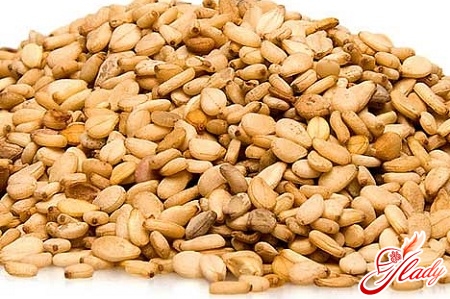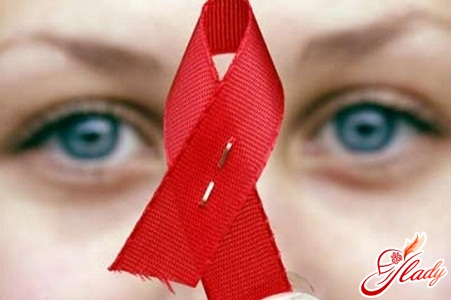
Candidiasis of the mouth is a fungal disease of the oral mucosa, caused by one of the microscopic yeast-like fungi of the genus Candida (Candida albicans).
Factors affecting the development of oral candidiasis
On the manifestation of pathogenic properties of fungi of the genusCandida is primarily affected by the state of the human body. The main role in the development of candidiasis is the decrease in the protective function of the immune system. Candidiasis of the oral cavity is usually manifested with immunodeficiency states or against the background of an imbalance of the immune system. The following concomitant diseases may contribute to the development of candidiasis: tuberculosis, HIV infection, sarcomas, type 1 and type 2 diabetes, hypothyroidism, hypoparathyroidism, etc. The development of candidiasis directly from the oral mucosa is facilitated by diseases of the gastrointestinal tract (achilles, a decrease in the acidity of the stomach). Candidiasis of the oral mucosa very often is the primary symptom of the asymptomatic course of type 1 diabetes mellitus, as a violation of carbohydrate metabolism in the body creates favorable conditions for the growth of Candida fungi in the mouth. Therefore, in the presence of symptoms of chronic candidiasis, it is necessary to make a blood test for glucose to exclude diabetes mellitus. Medicinal candidiasis The development of candidiasis of the oral mucosa is promoted by treatment with cytostatics and glucocorticosteroids. They inhibit the human immune system and contribute to enhancing the stability of yeast-like fungi. In recent years, uncontrolled antibiotic therapy has become widespread, which has contributed to a sharp increase in patients who have appealed to hospitals for candidiasis of the oral mucosa. In the oral cavity there is a violation of the composition of its own microflora, which leads to the development of dysbiosis, creating ideal conditions for the uncontrolled growth of yeast-like fungi of the genus Candida. A similar effect on candida is provided by the administration of various antimicrobial agents (sanguirithrin, trichopolum, chlorhexidine, etc.). In addition, candidiasis can be caused by the use of alcohol and drugs, taking medications for oral contraception, exposure to radiant energy, etc. In rare cases, infection with candidiasis occurs through oral sex, a kiss, when the child passes through the infected mother's birth canal. Influence of the state of the immune system An important role in the development of candidiasis in the mucous membrane of the oral cavity is played by the state of its immunity. The development of the disease in this case is promoted by chronic traumas of the mucous with sharp edges of the teeth, improperly selected dentures, collapsing dental crowns, etc. These and other factors contribute to the penetration into the wound of fungi of the genus Candida and their subsequent reproduction in it. Particular attention to the spread of infection should be given to people who use removable dentures from acrylic plastics, because yeast-like fungi grow well on their surface, contributing to the maintenance of chronic inflammation of the oral mucosa under the prosthesis. When the first signs of candidiasis appear, you should immediately contact your dentist. If treatment of the disease is not carefully considered, it can go from the oral cavity to the esophagus and even internal organs. What happens with candidiasis of the oral cavity? Most often, candidiasis of the oral mucosa is observed in infants and elderly, especially weakened by severe chronic diseases. Due to a decrease in the function of the immune system, fungi of the genus Candida begin to activate, there is a secretion of various enzymes that promote increased reproduction and attachment of fungi to the cells of the oral mucosa. When the number of candida colonies exceeds the allowable value, the development of symptomatology characteristic of candidiasis will begin. 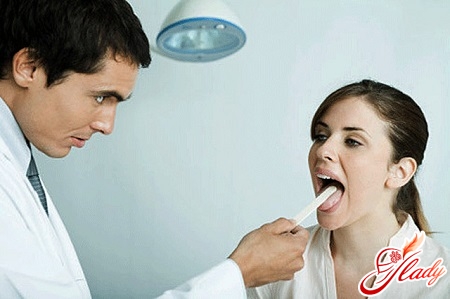
Symptoms of oral candidiasis
Symptoms typical for oral candidiasiscavities, are quite diverse and depend on the state of immunity, the age of the patient, the presence of concomitant acute or chronic diseases, the use of certain groups of drugs (glucocorticosteroids, antibiotics) and many other factors. The most common form of candidiasis of the oral mucosa is acute pseudomembranous candidiasis, or, as it is also called, thrush. Acute pseudomembranous candidiasis In infants, this disease occurs quite often and proceeds relatively easily, without causing severe symptoms. In adults, thrush is usually not a primary independent disease, but appears as a secondary comorbid condition in more severe pathologies (diabetes, hypovitaminosis, blood diseases, malignant tumors, tuberculosis, etc.). The main symptoms of mucosal lesions In this type of candidiasis, the mucous membrane of the lips, palate, tongue, cheeks, and tongue are first affected. Its sharp reddening, dryness, edema is marked. Against the background of hyperemia (redness), a white coating is clearly visible, which rises above the level of the oral mucosa and consists of Candida colonies. In its structure it resembles cottage cheese or curdled milk. In the initial period of the yeast infection, the plaque is easily scraped off by a spatula. Under it is a smooth, relatively hyperemic and edematous surface of the mucosa. In severe cases, the cheesy plaque accompanying oral cavity candidiasis takes the form of a continuous film covering the mucous membrane, becomes denser and scraped with difficulty, its color changes from white to dirty yellow. Under it is exposed mucous, covered with erosions or ulcers. Patients with thrush complain of pain when eating, severe burning in the mouth. 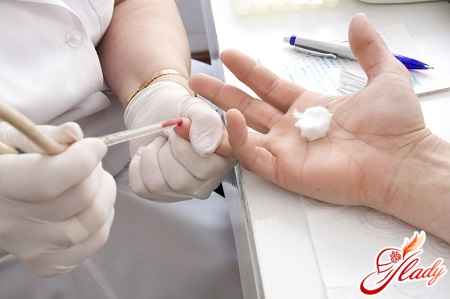
Diagnosis of oral candidiasis
The diagnosis of candidiasis of the oral cavity is put onbased on the clinical picture of the disease, patient complaints, laboratory data (microscopy of the mucous membrane of the oral cavity), the result of clinical blood tests, the study of serum glucose levels. It is necessary to examine the skin and nails of the patient for candidiasis. The main attending physician is the dentist, but if necessary, appoint an additional consultation of a gynecologist, a mycologist, an endocrinologist. The final diagnosis is made when a yeast-like fungus of the genus Candida is found in the scrapie from the mucosa of the oral cavity. A microscopic examination of scrapings from the mucous membrane of the oral cavity and removable dentures is carried out. Scraping is performed on an empty stomach before brushing teeth or 5-6 hours after eating. After the end of the course of treatment and the disappearance of the clinical picture of the disease, a repeated microscopic examination is carried out. Differential diagnostics Differential diagnosis (unlike other diseases with similar symptoms) of such a disease as candida of the oral cavity is carried out with allergic stomatitis, syphilitic papules (elements of the rash that represent the amorphous formations that rise above the level of the mucous membrane of the cheeks, gums, tongue), various forms of drug stomatitis, red planar weed. 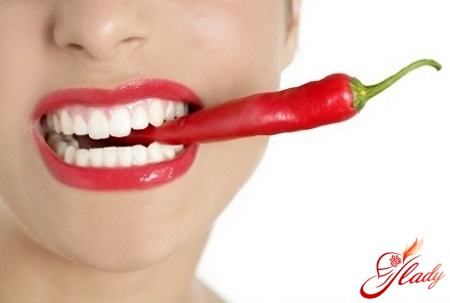
Treatment of candidiasis of the oral cavity
Treating yeast infection is a complex process, requiringindividual approach in each case. The complex of therapeutic measures includes not only the medicamental effects directly on the pathogen. Also, measures are being taken to improve the body's immunity, treatment of concomitant diseases (diseases of the gastrointestinal tract, leukemia, diabetes mellitus), sanitation of the oral cavity. An important role is played by rational nutrition. If candidiasis was caused by the intake of antibiotics, glucocorticosteroids or sulfonamide drugs should be corrected for their intake with the addition of antifungal drugs. General treatment of candidiasis For oral administration, antifungal drugs are prescribed (Levorin or Nestatite 4-6 times a day after meals with a course of 10 days). Before taking the pill is recommended to crush and the resulting powder to dissolve under the tongue, as these drugs are poorly absorbed in the gastrointestinal tract. Levorin is usually prescribed in the form of tablets intended for resorption behind the cheek. Also good antimycotic effect is provided by Desamina's suckling caramels (1-2 caramels 6-8 times a day). Caramels are placed on the cheek or under the tongue and held until completely absorbed, if possible without swallowing movements. A good antifungal agent is Diflucan. It is prescribed in capsules of 50-100 mg (depending on the severity of the condition) 1 time per day. To reduce the dryness of the oral mucosa and to affect yeast-like fungi, a 2% solution of potassium iodide is used. The solution is taken 2-3 times a day for 1 tablespoon after eating. The solution inhibits the growth of fungi, and iodine increases salivation. Local treatment of candidiasis To lubricate the oral mucosa, 0.5% dekaminovy ointment, amphotericin B, 1% solution and 1% ointment clotrimazole are applied. Mucous membrane of the mouth and lip rims are treated with dye solutions (1% solution of gentian violet, solution of fucocine, 2% solution of methylene blue). The harmful effect on the fungus of the microflora is provided by means alkalinizing the oral cavity medium (2% solution of sodium tetraborate, or borax, 2% sodium hydrogen carbonate solution, or soda food, 2% boric acid solution.) Rinses are made with 1 glass of solution up to 6 times a day. It is necessary to protect the oral mucosa from mechanical damage, to perform its thorough sanitation, which can be started 2-3 days after the beginning of antimycotic therapy. Dentures for the removal of candidiasis are treated with the same solutions as the oral cavity. Traditional methods of treatment In the treatment of candidiasis in addition to drug therapy with great success, folk methods are also used. A very effective method is rinsing the oral cavity with herbal decoctions (chamomile, bark dumpling, sage). To remove cheesy plaque, it is smeared 3 times a day with sea buckthorn or St. John's wort oil. Another effective means is a drink based on yogurt. To make it, you need to rub the clove of garlic and mix it with a glass of curdled milk. The received drink to take inside 1 glass 4 times a day for half an hour before meals. Diet with oral candidiasis From the daily diet, dairy products, any kinds of sugars (milk, beet, fruity, reed), alcohol, vinegar and its sauces (mustard, ketchup, mayonnaise), cereals (oats, rice, wheat, rye ), mushrooms, yeast and yeast products (buns, breads, pastries), smoked products (especially sausage), caffeine (it provokes the release of large amounts of glucose by the liver, so you should give up coffee and tea for the duration of treatment), sour products, pickles, cheeses with mold. It is recommended to eat lean meat (turkey, chicken, lean veal, lamb), fish (preferably lean species), eggs, buckwheat, low-carb vegetables, fruits and berries (cabbage, spinach, lettuce, onion, green pepper, garlic, avocado , pears, raspberries, blackberries). From dairy products, the use of unsweetened yogurt, cheeses with low lactose content (Swiss, mozzarella) is acceptable. If during the diet there is an irresistible thirst for sweet, you can drink a little sweetened juice or make a dessert using sweeteners. 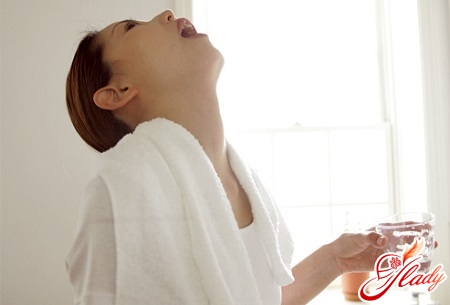
Prophylaxis of candidiasis of the oral cavity
The main measures to preventthrush, are regular proper oral care and removable dentures. When treating antibiotics and glucocorticosteroids for preventive purposes, prescribe levorin or nystatin, rinsing the oral cavity with alkaline solutions. Teeth are recommended to clean toothpastes with the content of borax solution in glycerin. Removable dentures for teeth require treatment with special means designed for their cleaning. The natural protection of the human body from yeast-like fungi is the consumption of yoghurts or other fermented milk products containing live cultures of bifidobacteria - antagonists of fungi, as well as the use of products with excellent antimycotic action: propolis, hot chilli, garlic, grapefruit, berries, red bilberry, oil tea tree.







